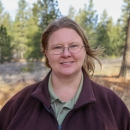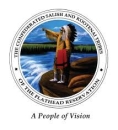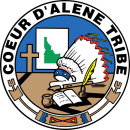Monitoring is a vital task at any National Wildlife Refuge.
Wildlife Monitoring
Staff monitor wildlife to inform management actions, and then monitor wildlife after management actions to make sure that what was done was beneficial, or if a change in strategy is needed.
Staff can’t monitor every type of wildlife, but some waterfowl species are good indicators of wetland health. Turnbull is an important breeding spot for waterfowl, so staff monitor breeding pairs in the spring. We can look at waterfowl trends and how that relates to wetland conditions. In the uplands. land birds are monitored via point counts, which provide good indicators of forest habitat health.
The Complex is also partnering with the Kalispel, Coeur D’Alene, and Kootenai tribes on a regional waterfowl study to understand wetland use along this part of the Pacific Flyway. This will involve banding and GPS backpacking. The project is beginning this year, but efforts won’t begin at Turnbull until 2025.
Vegetation Surveys
Because the primary mission of the agency is to restore and improve habitat for wildlife, refuge staff must continually monitor the composition and quality of available vegetative resources.
At Turnbull, a majority of efforts focus on monitoring the federally threatened Spalding’s catchfly, with surveys to monitor population size occurring annually.
Invasive plant species are mapped across the refuge and tracked to identify areas that need treatment and to monitor areas that have been treated previously in order to identify success.
Aspen stands are monitored for new growth (recruitment) and damage from wildlife (browse) such as beaver and moose.
Staff use terrestrial LiDAR scanning to quantify changes in vegetation, especially in upland areas of primarily ponderosa pine forest.
Water Level Monitoring
Turnbull has over 130 wetlands. 22 of these have water control structures, which allows staff to manipulate water levels. Continued monitoring of water levels on the refuge allows managers to optimize habitat use for a variety of wildlife, including waterfowl, amphibians, reptiles, moose, and a variety of aquatic and semi-aquatic plants.
These flora and fauna and their habitat are at risk due to several factors, including altered hydrology from historical diversions, climate change climate change
Climate change includes both global warming driven by human-induced emissions of greenhouse gases and the resulting large-scale shifts in weather patterns. Though there have been previous periods of climatic change, since the mid-20th century humans have had an unprecedented impact on Earth's climate system and caused change on a global scale.
Learn more about climate change , and non-native species such as reed canary grass.








